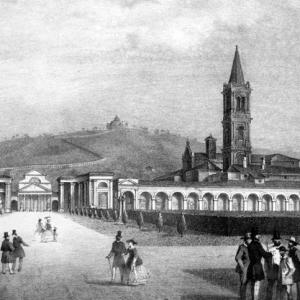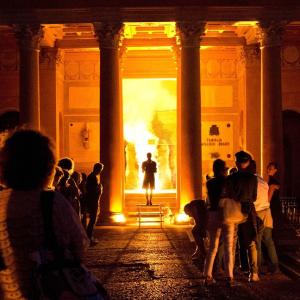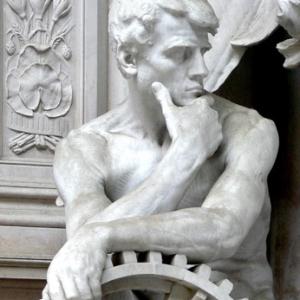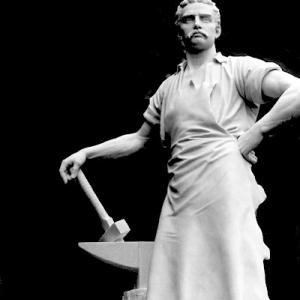Schede
The Cloister VIII of Certosa was built in the 1920s and it is made up of 26 arcades in the long sides and 7 in the short ones. The architectural structure is very simple but elegant, almost devoid of decorative elements. Contrariwise both in the yard and under the colonnades there are lots of outstanding artworks and tombs where several well-known personalities of the history of Bologna lie.
Here are located many important monuments dedicated to the fallen of the First World War, often commissioned by their families to the best sculptors of that age (Pietro Veronesi, Mario Sarto, Arturo Orsoni) in memory of the sons fallen for their homeland. In the yard, among the several family memories, there are two monuments in honour of the soldiers who died in Russia during the Second World War. Other significant works are a bronze stele, created in 1992 by Pasquale Rizzoli and dedicated to Giulio Giordani (1878-1920), Primo martire della rinnovata Italia; the Monument sculpted by Bruno Boari is in honour of Giovanni Palmieri; the arch dedicated to Monti family was made by Alessandro Franceschi. Among the memories to the fallen during the First World War, there are Ariondo Andreini’s “His name shines as a tear and bleeds as a wound” and the golden medal Corrado Mazzoni’s “che cadde a sommo del monte e della giovinezza, con l’azzurro nel petto e l’ombra nel pugno”. In the cloister you can also find Anna Bonazinga D’Amico (1830-1906), the most renowned clairvoyant of the 19th century; Maria Dalle Donne (1778-1842) one of the fist graduated women in Medieval Science; Badini brothers, Angelo and Enrico, both football champions. The enclosure of the Sarcophagi is a space between The Cloister VIII and the Cloister IX. It consists of two colonnaded lodges in the short sides, while the long ones are formed by a central gap with six sarcophagi per side, situated within deep lowered lodges. Among the artworks you can see the stele of the Ferrari family made in 1928 by Pasquale Rizzoli and the bronze relief by Gaetano Samoggia for the Trebbi family. Francesco Malaguzzi Valeri (1867-1928), an art historian, lies in a crypt placed in the middle.
Traduzione a cura di Attardo Aurora, Franchi Daniela, Meli Francesca e Tempesta Alessandra nell'ambito del progetto di Alternanza scuola-lavoro 2018/19 con il Liceo Ginnasio Luigi Galvani di Bologna.









